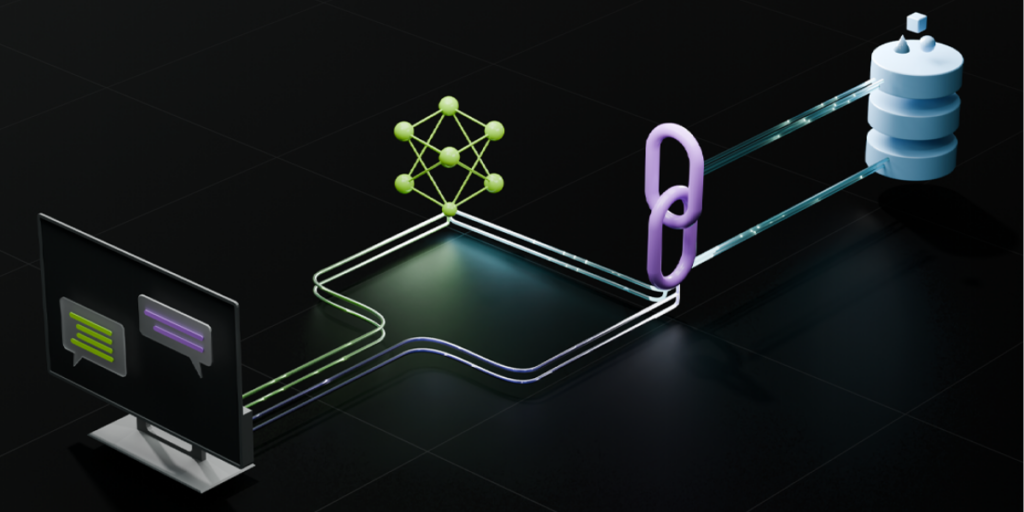Every market, business, or industry is composed of two parts: the consumers and the providers. Without one, it could not exist. We aren’t even going to begin wondering who first. What is fascinating is that contemporary service and product companies are also serving as normal IT users. They are clients looking for the right solutions for their requirements.
Software for enterprise is the core of digital workflows and experiences governed in all kinds of companies. The foundation sets modern providers’ activities in motion, which sets them apart from traditional software solutions designed for general use. What exactly is it?
Let’s explore the topic of enterprise software development to get a better understanding of it.
What is Enterprise Software?
Enterprise Software is a collection of applications that aim to simplify the business operations of large companies and allow them to work efficiently. It includes sophisticated functions, including enterprise resource plan (ERP) and Customer relations management (CRM) accounting software, as well as logistics and supply chain systems.
In reality, the worldwide market for enterprise software is predicted to grow to USD 519.88 billion in 2030. This is merely a sign that established companies need these kinds of software.
Reasons Businesses Invest in Enterprise Software
Although off-the-shelf software for business is available, it often needs more scalability for enterprise requirements. Here’s the reason you should create an enterprise-level software solution for your business:
Scalability and Adaptability
Enterprise software is designed to expand with the organization. It can handle ever-growing amounts of data and users without performance issues. Furthermore, it allows you to adapt the software to your workflows and processes, which ensures the optimal fit for your company.
Centralization and Seamless Integration
The software can integrate different systems from different departments (finance as well as HR inventory management, finance, etc.) This allows for an effortless flow of data that eliminates silos and inefficiencies. Additionally, central control streamlines the management of data, decreases the amount of redundant data, and encourages collaboration between teams.
Data-Driven Decision-Making
Custom software solutions provide robust analytics that give real-time insights into customer behavior, operational efficiency, customer satisfaction, and your business’s core strengths. These insights help make better decisions and lead to better strategies, resource allocation, and overall performance.
Improved Security and Compliance
Enterprise-grade software protects sensitive information, access control, and security against interruptions. Furthermore, the software can be designed to meet industry regulations and receive periodic security updates that address weaknesses.
Long-term Cost Savings
Although investing in enterprise software could be substantial, it can also provide significant long-term cost savings. The software’s automation capabilities can reduce manual labor costs, eliminate the necessity of having multiple siloed systems, and reduce maintenance costs.
Features to Focus On
It’s not a “one-size-fits-all” situation in the case of building enterprise-level apps. However, you could consider prioritizing certain elements to improve your business processes.
Comprehensive Database
Because enterprise applications are, in essence, a corporate system, they are interconnected with data from users and data flows. The enterprise database is where all this data is kept. Another way of thinking about this is to imagine databases as a collection of tables that contain information relating to people, products, and assets, as well as all their characteristics and features.
Since the information stored in databases is constantly changing, tables need to be adaptable and reliable. They must also be consistent across all gadgets and platforms without delay or interruption.
Multiple User Roles
Enterprise apps are created to serve a variety of users within the company. However, not all of the information within the app must be available to all users. The app’s multiple user roles accomplish this. They authorize a specific group of people to perform certain actions and to access a specific portion of the data in the business app.
Compatible with Third-Party Apps
Making enterprise-level applications that don’t collaborate with other software is almost impossible. For instance, you’re using Jira to manage projects, Google Docs to edit, and other software to manage business processes. It’s unnecessary to duplicate these kinds of apps; instead, you can take advantage of them and work with them in conjunction with your enterprise app.
Instant Messaging (IM)
One goal of an enterprise application is to provide a place for employees to interact with each other. Incorporating chat features into your software for corporate use is an excellent idea, as it allows for simple interactions with employees and keeps track of any previous changes to particular files.
Real-Time Analytics
An enterprise application is an ideal platform for millions of people to communicate daily. This is especially true when it comes to offsite team communication. To avoid data processing errors, the corporate software should be able to change in real-time, avoiding any problems.
Benefits of Custom Software Development
Custom software development can benefit companies in various ways. It can help them streamline processes, enhance customer satisfaction, improve efficiency, and achieve their business goals. Companies can reap These top advantages of custom software development by choosing the right solutions rather than off-the-shelf software.
Personalized User Experience
Nowadays, every user needs a personalized experience with their brand. Custom software development is created to give users a unique experience. In contrast to COTS software, which is designed to meet the requirements of a vast population, Custom solutions are designed to meet specific challenges and satisfy specific business needs. They are designed with specific features and techniques that you prefer, helping companies achieve a top position in their particular fields.
According to McKinsey, 70% of consumers demand personal solutions from the labels they interact with, and 76% are disappointed when businesses do not provide them. In light of the need for customized experiences, custom-designed software is essential for companies that want to compete to be competitive.
Robust Security
Contrary to generic software, customized application software offers robust security for users. It is a closed-source project that is only accessible to your group, which reduces the possibility of intrusion. However, those with malicious intent can easily carry out their plans by hacking into COTS applications since they usually use open-source code. Hackers are aware of security holes.
Scalability and Flexibility
Custom software allows businesses to increase or decrease the size of their software according to their needs. Contrary to off-the-shelf software, customized software is tailored to fulfill requirements without violating licensing agreements or risking penalties.
Increased Productivity
Custom software development automates and streamlines business processes, enabling companies to increase productivity and improve competitiveness. By reducing the necessity for manual labor and the chance of human error, custom solutions can help increase operations efficiency, improve customer experience, and provide new products and services.
High-End Integration
A COTS investment becomes an unintended consequence when it becomes apparent that you must integrate extensions into the system to bring it to a point of value. Making the same investment in an individual software program easily integrated into the system can save you money, time, energy, and money.
Cost-Effectiveness
By using custom programs, you can design the development process efficiently. Investing massive amounts of money immediately is unnecessary to reap the benefits of automation. Based on your business’s plans and financial resources, it is possible to automate the process in one go and then plan additional automation steps to make custom software development cost-effective.
Reliability
Software reliability is essential for every business, and developing custom software applications is a reliable and secure way to streamline processes. Custom software developers employ modern technology and top protocols to protect the applications and ensure the program’s highest-quality performance and security.
Exclusive Ownership
When you develop custom software, you have the right to alter and maintain your product without restrictions to meet the industry’s ever-changing needs. Suppose you run into problems with your current software. In that case, you can contact the development team to receive prompt technical assistance to resolve and address issues as quickly as possible.
Challenges of Enterprise Application Software
The process of creating an enterprise-level software application is a challenging walk in the park because there are a few challenges you’ll likely encounter. However, knowing these challenges beforehand will allow you to be ready to tackle the challenges head-on.
Company Expansion and Rapidly Evolving Environment
It’s well-known that business goals and environments constantly change. This could be due to new technology, economic growth, or just a change in services. Thus, one of the toughest issues in developing enterprise applications that most developers face is the need to incorporate new processes and standards. The design for enterprise applications is complex, and any attempt to make changes must align with others.
So, you need to develop a flexible and scalable framework. Modular architectures are one solution to this issue since any changes made to one module will not affect the capabilities of the other modules. This may help the business’s enterprise application reduce time and prevent lengthy downtimes.
Expenses and Time
The process of developing an enterprise-level application could be lengthy and costly. If the method and strategy aren’t clearly defined, it could take between 5 and 6 months to build. This is why businesses must be prepared ahead of time before creating an application.
Knowing the kind of software you’re looking for will save you time and money because you’ll know exactly what features you require. In addition, you must consider alternatives to reduce development time and costs. Using technologies like cloud computing DevOps, as well as others, will aid in saving more money in the future.
Increasing ROI
One common enterprise app problem is that it has a low return on investment (ROI) because the software takes a long time to create and can cost quite a bit. This is why it’s essential to organize the production process and ensure that all elements and requirements are accurate. An organized and thorough preparation can assist the development team in predicting the timeline and costs. It will also prevent customers from having to pay out before the completion of the project or from having to deliver an item that fails to meet all requirements.
Thus, you must plan the development process, set the priorities, and then evaluate them regularly to ensure that all components and functions are completed.
Integration of Third-Party Systems
Another issue frequently encountered with software integration services, which many companies face, involves the integration of various applications. Corporations typically develop enterprise applications to streamline business operations, so investors expect that multiple companies and clients will utilize their software. Software for corporations must provide a range of services that require integrating different programs.
Businesses should define their objectives and requirements before beginning any development. If there’s an application upon which your company is heavily dependent, inform the developers and keep track of the application’s capacity requirements and size.
In essence, enterprise applications are developed by businesses to unify every aspect of business, and this means that shareholders want the software to be accessible to various organizations and users. In turn, corporate software has to provide many services, which requires the integration of third-party applications.
Before beginning any development, organizations must determine their goals and objectives. Track the product’s scalability specifications and size, and inform developers of any application on which your company is heavily dependent.
Large Quantities of Data Storage
The storage of massive databases is a crucial business application development issue. It isn’t easy to manage due to the enormous computational infrastructure, bandwidth, and storage speeds that can slow down the speed of data response and loading times for users. This is especially true for large-scale companies or large numbers of clients.
Therefore, it is crucial to motivate both businesses and consumers to reduce the size of their datasets by reminding them to clean out old data regularly. It is also possible to use cloud-based storage systems or third-party database management programs.
Management and Security
Cybersecurity risks are among the most frequent problems an application development company faces. Enterprise software handles sensitive data, such as business procedures, and proprietary data, such as customer information. Secure software increases trust in the software and provides oversight for enterprises and users.
A robust defense mechanism must be in place at the network and server levels, including encryption and firewalls. This is essential to ensure the security of your work applications and deal with any security issues that might be discovered.
Additionally, regular sensitivity tests of the software should be conducted to detect weaknesses that hackers could be able to exploit. Companies should also regularly implement security updates to stay updated with the most recent technologies.
Recruiting and Training Employees
Many companies need to realize that employees are the ones who use the application after it’s been designed. It is easy to get caught up and implement a plethora of fancy features that, in reality, employees aren’t using. Your employees become ignorant of their obligations or how to use the software.
The most effective method is to instruct the employees and give them an in-depth description of the program and its features. Then, show them how they can use the program in their everyday tasks. Also, give them an assortment of resources, including tutorials and manuals, to improve their understanding of the program.
Simple Interface
Designing a user-friendly and enjoyable layout is among the most common issues companies face when developing applications. In many cases, the software interface is overloaded with components that are not understood by the users, which results in users having a difficult time using the program. If interested users aren’t able to find the software helpful or simple, then it is all back to the creator, and they must start again from scratch.
In the same way, it is crucial to ensure that you can clearly define the user experience when using the app. It is crucial to consider the importance of creating an interface that is efficient and user-friendly for the average user. Be sure that your application offers a great user experience while being fast and efficient.
Upgrade Outdated Software
Instead of constructing brand-new enterprise software from scratch, you may want to consider upgrading the software you have in place. Many companies want to use their old enterprise software, but this can create new issues.
Older software isn’t compatible with newer software and needs to meet legal and business requirements. It’s much harder to manage and often crashes, making integrating new features and functions difficult.
Before you begin your upgrade plan, the previous software should be thoroughly analyzed. Your decision will take into consideration aspects like the size of your group and the complexity of the program. Also, a well-thought-out design and a common enterprise application language that allows flexibility and changes after the software is created are essential.
Upkeep
Creating software for business maintenance is as crucial as the program itself. While it is not the primary concern, your enterprise application must be flexible to changes in circumstances and needs.
The modular structure used within enterprise applications makes maintenance tasks simpler to oversee and manage since it is easier to update and maintain software.
Process to Enterprise Software Development
Implementing enterprise-level software in your company, if done correctly, will take your company to the next level. If it needs to be done correctly, it can transform your process from a planned one into a complicated one.
Let’s review the procedure.
Prepare A Blueprint
Before beginning the development of enterprise-level software, create a detailed plan that includes your project’s plans, schedules, estimates of timeframes, costs, and any other software requirements.
- Project Plan: Create an outline of the enterprise software you wish to develop on paper. The project plan will help determine the development tools, programming languages/frameworks, and platforms to shape the software’s outlook.
- Timelines and Schedules: Create realistic deadlines and get professional experts to the table. This will indicate the time the software will require to develop the software.
- Budgeting and Cost Estimation: Prior to entering project mode, it is essential to ensure that the program is cost-effective and affordable.
- Software Requirements: Make an inventory of the things you need to start software development. This includes personnel, tools, hardware, and other sources.
Assess Project Requirements
At this point, it is crucial to ensure that all software requirements are defined and understood by all stakeholders. Schedule meetings with your team members to assist them in understanding the timeframe, resources required, and other elements of the software. Create a formal document that contains the required information and gather as much information as you can.
You can holistically evaluate your project’s requirements:
- Examine the software you have in place
- Participate in meetings and sessions with developers and users
- Collect user information via surveys, contests, questionnaires
Choose The Right Technology
To develop enterprise-level software, you must choose the best tech toolkit available for developers:
Today, most companies run an ERP system on a cloud or a local server, which is thought to be more secure.
Choose the appropriate programming language for creating enterprise software. JavaScript frameworks are ideal for front-end development, and Node.js is the backend.
Select a reliable database for storing massive amounts of data. SQL databases are ideal for small businesses with an immense demand for standardization.
Search For a Skilled Team
Finding the right source of expertise to carry out enterprise software development can be daunting. Experts who can manage the entire process effectively and efficiently must be top of the list. The team of expert ERP implementation specialists manages the challenges of evolution, data migration, and the transitional phase.
You require a professional and skilled team of
- Project Managers
- Analysts
- QA Engineer
- Consultants
Software Design
Most software projects need to be adequately planned or better executed. When developing and designing, ensure your strategy is realistic and user-friendly.
Once you’ve listed the requirements for the software, designing will be a breeze. The information you’ve collected will assist you in planning the software to meet your company’s requirements. Before you finalize your plan, design the prototype and then present it to the entire team for review. The design of the software may be complex, but it is simple.
Software Development
The development of enterprise software is about finding the perfect equilibrium between software quality and business value. Making a wrong choice could cause problems.
It’s time to create the software after you’ve finalized the software design and development tools. Developers can begin writing code using the program’s SRS (software requirements specification). It is crucial not to complete the development quickly, causing certain loopholes or barriers.
Software Testing
Before you release the final version of your software to your clients, verify the program thoroughly. Check the software for various aspects to identify errors and bugs. The software can run a variety of tests to verify its functionality.
- Code Quality: It reduces the chance of glitches and crashes to create crystal-transparent code that is easily read and simple to modify as necessary.
- Testing Units: Test the various components to ensure that the software unit operates exactly as it should.
- Integrity Testing: This test exposes any flaws or loopholes in the interplay between the units. Each unit is tested to ensure that they function smoothly.
- Tests for Performance: The test removes the software’s performance bottlenecks. The developers then evaluate the speed and response time, as well as the program’s reliability, resource utilization, and scalability, in relation to the expected workload. Additionally, they ensure the program runs smoothly, regardless of whether several users use it simultaneously.
- Security Testing: Developers conduct security tests to identify vulnerabilities, threats or dangerous risks. It finds security vulnerabilities within the software, which are addressed by coding.
Once this testing stage is successfully concluded, your program will be ready to be deployed.
Software Deployment
In this phase, your enterprise software will be ready to launch into the market. The deployment stage is about receiving manual approval for the software deployment.
Some businesses use automated tools to install the software, like Application Release Automation (ARA). When the software is available for employees, you must educate them on using the program. You can expect a smooth release of your new enterprise software in this phase.
Support and Maintenance
After a successful launch, you must monitor the software frequently to ensure seamless operation. Since there’s always room for improvement, the software can be upgraded and modified based on user feedback.
Regular checks can also uncover any defects or bugs in the software that could affect its performance. Eliminating these bugs is vital to avoid issues in the software.
Conclusion
Enterprise software architectures play an essential role in constructing and designing complex software systems to satisfy the changing requirements of modern-day businesses. If you know the significance and different types of patterns for enterprise software architecture, you can select the most appropriate design for your company. By leveraging these patterns, developers and architects can develop adaptable, scalable and durable solutions that can adapt to the changing requirements of business and technological environments.
There are many designs, and picking the one that most closely matches your requirements and goals is vital. By taking a planned approach to designing software architecture and utilizing proven patterns, businesses can enhance their software’s quality, effectiveness, efficiency, and efficacy and their chances of success in the new digital age. It is beneficial to work with a professional enterprise software development company to avoid common mistakes and ensure the efficient delivery of your software.








